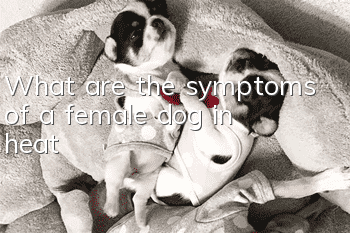Characteristics and treatment methods of Chihuahua illness

Chihuahuas are not only susceptible to diseases common to small dogs, such as tracheal collapse, but they also often suffer from neurological genetic diseases, such as epilepsy, and patellar joint dislocation. Many diseases are quite special, that is, there are no symptoms at the beginning of the disease. The owner cannot judge the physical health of the Chihuahua just by simple observation. We can understand the disease of the Chihuahua from the characteristics of the disease. some situations.
Characteristics of Chihuahua illness:
First: The Chihuahua’s skull has a fontanel. Simply put, the skull is not tightly sealed. There will be a small hole on the top of the Chihuahua’s head, which can accumulate cerebrospinal fluid. When the cerebrospinal fluid accumulates too much and compresses the brain, it can cause diseases. , is called hydrocephalus. Some dogs suffering from this disease will frequently hit the wall with their heads, walk unsteadily, and even lose sight; but some dogs have no symptoms at all.
Second: Although the Chihuahua is small and does not eat much compared to other types of dogs, it is actually the type that can easily become fat. Chihuahua's body fat is distributed under normal circumstances. The ribs should not be visible from the outside, but the ribs can be felt. If the fat layer on the Chihuahua's ribs exceeds 5 mm, it means that the Chihuahua is obese, which can easily make it sick, such as causing osteoarthritis in the body. It will also be more difficult for the veterinarian to check, and the amount of anesthesia will be increased. Dosage and surgical risks.
Third: There may be lice in the ears when scratching and waving the head; if there is an increase in eye feces in the corners of the Chihuahua's eyes, it may be keratitis, conjunctivitis, or even canine distemper, etc.; In addition, when the Chihuahua is sick, it may also vomit, Diarrhea, fever, loss of appetite, drooling, bad breath, nosebleeds, enlarged tongue, cough, etc. Note that there are many diseases that affect the health of Chihuahuas, such as colds, gastroenteritis, parvovirus, canine distemper, oral diseases, skin diseases, etc. Different diseases cause different symptoms.
Treatment methods for Chihuahua illness
1. Hydrocephalus
Hydrocephalus is caused by abnormal reabsorption of cerebrospinal fluid by spider membrane trabeculae, causing the ventricles to enlarge and compress the brain tissues.
Symptoms: Primary hydrocephalus is caused by abnormal reabsorption of cerebrospinal fluid by spider membrane trabeculae. Other forms of primary hydrocephalus may also result in obstruction of the flow of cerebrospinal fluid due to blockage of the midbrain aqueduct. Common clinical symptoms of encephalopathy include: epilepsy, poor vision, slow learning ability and dementia.
Treatment: For primary hydrocephalus, long-term use of steroids has limited effect. Some diuretics, such as furosemide, also inhibit the production of cerebrospinal fluid. Short-term diuretics can reduce intracranial pressure, but long-term use may cause ion imbalance in the body. In some cases, surgical drainage works well.
2. Intervertebral disc disease
In elderly animals,Such problems often result in immobility, urinary incontinence, muscle weakness and even paralysis. Passive treatment is medication, and active treatment is surgery to remove the compressed disc to reduce neurological symptoms. As we age, the intervertebral discs may become compressed or herniate and compress nerves. According to the anatomical location, it is generally divided into two locations: cervical spine and thoracolumbar spine. If you suffer from intervertebral disc disease, about 15% occurs in the cervical spine and 85% occurs in the thoracolumbar spine.
Symptoms: The neck will twitch, the forelimbs will not dare to touch the ground, and in severe cases, the limbs will be weak or even paralyzed.
Treatment: Initial symptoms can be tracked through outpatient care. If mild neurological symptoms occur, such as loss of pain in the hind limbs and slow movement, close tracking should be conducted. However, you should first limit exercise for 2-4 weeks, which can usually relieve symptoms. If severe symptoms occur, further surgery should be considered. Oral medications usually include steroids to suppress or prevent the development of neuroedema, and analgesics to reduce the animal's discomfort.
3. Tracheal collapse
In some species of animals, due to abnormalities in the tracheal cartilage structure, the trachea is prone to collapse and the tracheal lumen is relatively narrow.
Symptoms: Difficulty breathing, goose-like cough, and sometimes severe collapse, resulting in animal hypoxia and shock.
Treatment: Bronchodilators. Severe infection requires surgical reconstruction of the trachea. Long-term tracheal collapse can easily cause heart disease, so regular heart examinations should be performed. The owner should learn CPR and should have a bottle of oxygen handy if it is needed.
After reading the above content, readers can understand some of the conditions of Chihuahua's illness from the characteristics of its illness. I hope the above content can help all my friends.
Recommended Good Things
Aineng Pet Odor Eliminating Disinfectant can effectively remove body odor/feces odor and other odor molecules! Effectively treats skin diseases caused byfungi/bacteria! Can killparvovirus/canine distemper virus/coronavirusetc.!
It is edible grade for pets, does not contain fragrances, does not contain chemicals, can be sprayed directly, and is harmless to human pets!
Consultation:13028809308 (WeChat synchronization)
Scan the QR code on WeChat to enter the purchase
- Puppies keep sneezing from their noses
- How to prevent dog allergies
- Why do dogs have black spots on their belly?
- Treatment for Cough in Elderly Dogs
- Why does a pregnant dog have a bad appetite?
- Does your dog need to brush his teeth?
- Dog skin disease symptoms
- What color are beagles?
- Introduction to Halexi Healthy and snack classification
- How to care for your dog’s mouth hair



